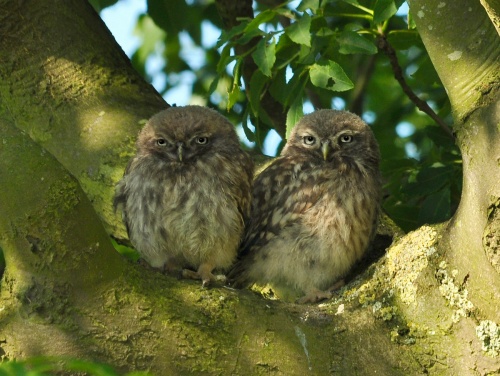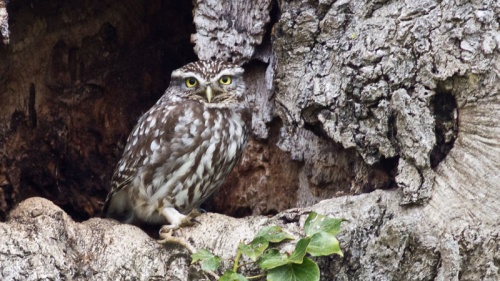Little Owl - Athene noctua
This small owl was introduced to the UK (Kent and Northamptonshire) in the 19th century. It is often seen during the day, usually perching on a tree branch, telegraph pole or rock. It will bob its head up and down when alarmed. In flight it has long, rounded wings, rapid wing beats and flies with a slight undulation.
Found in England and Wales with a few in southern Scotland. It likes lowland farmland with hedges and copses, parkland and orchards. Most common in central, southern and south-eastern England and the Welsh borders.
All year round, during the day. It hunts at night and dawn
Although it does catch small mammals and birds, its main food is worms and insects. It usually nests in holes in trees or rocks, laying 3-5 eggs which are incubated by the female.
Fairly common and widespread in England, but less so in Scotland.
Fairly common as a breeding bird in Leicestershire and Rutland.
Leicestershire & Rutland Map
Enter a town or village to see local records
MAP KEY:
Yellow squares = NBN records (all known data)
Coloured circles = NatureSpot records: 2020+ | 2015-2019 | pre-2015
UK Map
Species profile
- Common names
- Little Owl
- Species group:
- Birds
- Kingdom:
- Animalia
- Order:
- Strigiformes
- Family:
- Strigidae
- Records on NatureSpot:
- 91
- First record:
- 04/04/2005 (Semper, Alan)
- Last record:
- 28/01/2024 (Markham, Marian)
Total records by month
% of records within its species group
10km squares with records
The latest images and records displayed below include those awaiting verification checks so we cannot guarantee that every identification is correct. Once accepted, the record displays a green tick.
In the Latest Records section, click on the header to sort A-Z, and again to sort Z-A. Use the header boxes to filter the list.




